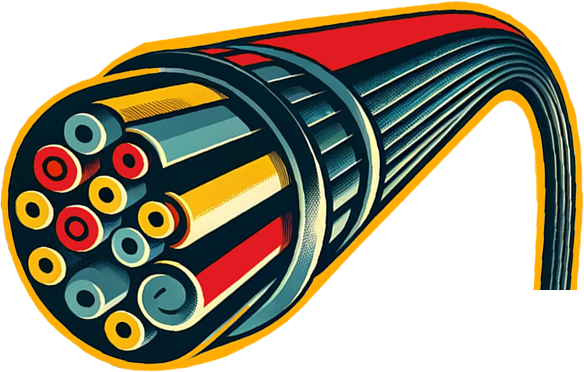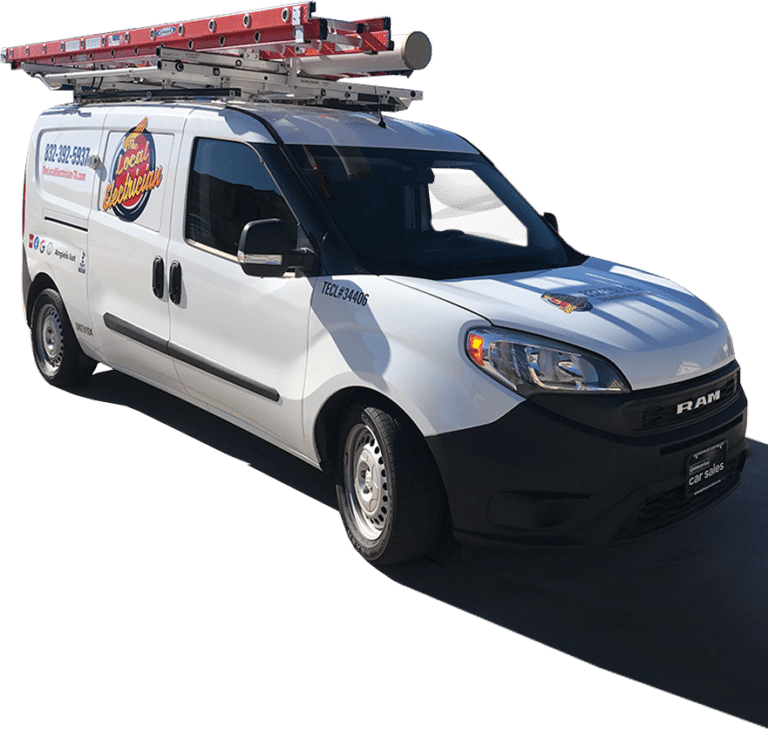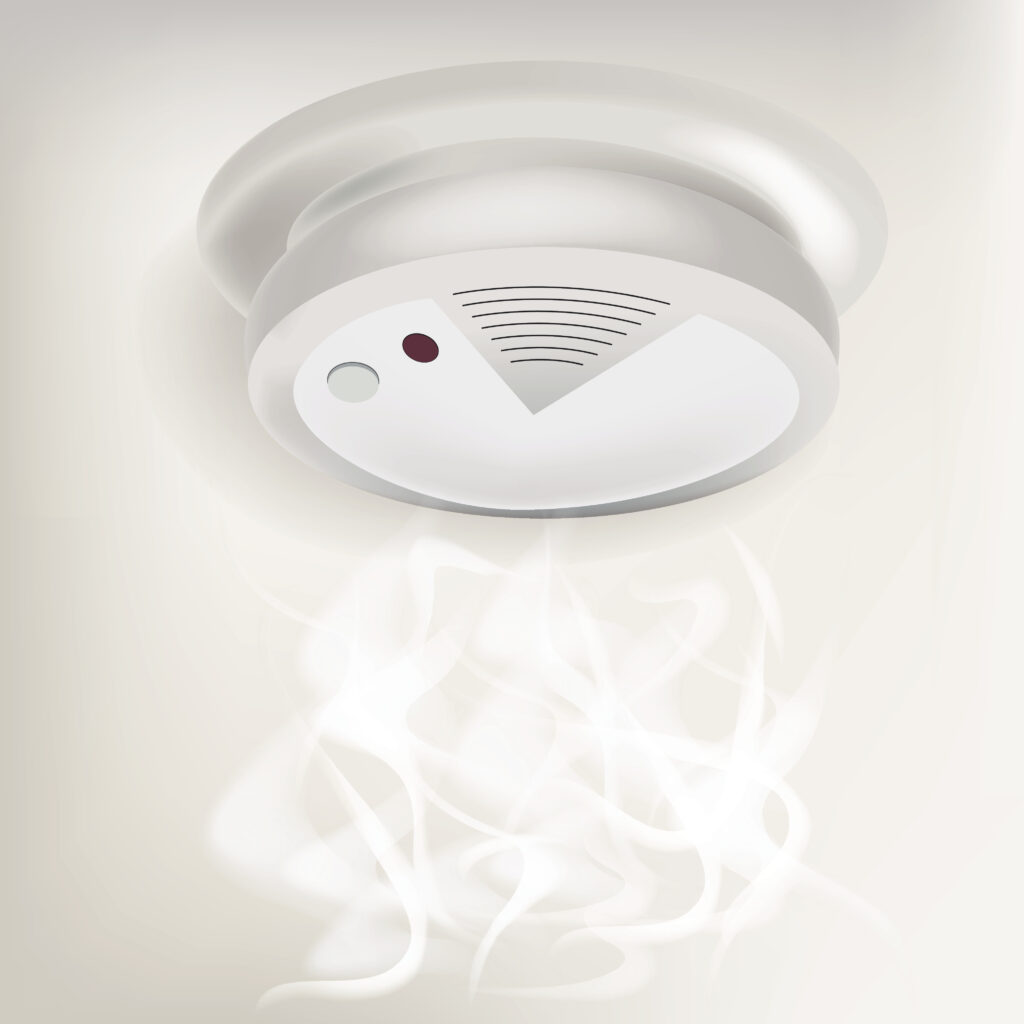
Have you ever considered how vital a smoke detector is for the safety of your home and loved ones?
Smoke detectors are a critical component in safeguarding your residence from unforeseen disasters.
They provide an early warning signal, allowing you and your family to evacuate safely in case of a fire. But how do you go about installing one correctly?
In this article, we delve into the comprehensive world of Smoke Detector Installation, providing you with all the necessary information to ensure your home is protected. From understanding the basics to exploring advanced tips, we’ve got you covered.
Learn about the different types of smoke detectors, the best places to install them, and step-by-step installation instructions.
A Detailed Explanation of Smoke Detector Installation
Smoke Detector Installation is not just about placing a device on your ceiling.
It involves understanding the right type, the best location, and the correct installation process to ensure maximum efficiency and safety.
What is Smoke Detector Installation?
Smoke Detector Installation is a critical process that involves strategically placing a device in your home, which is designed to detect smoke and trigger an audible alarm.
This alarm is not just a minor convenience; it’s a life-saving feature that provides you and your family with the essential time needed to evacuate safely in the event of a fire.
When we talk about Smoke Detector Installation, it’s not just about screwing a device onto a wall or ceiling. It’s about understanding the layout of your home, identifying the optimal locations for installation, and ensuring that the device is set up correctly to function as intended.
The installation process includes selecting the right type of smoke detector, whether it’s ionization, photoelectric, or a dual-sensor model, each designed to detect different types of fires with greater efficiency.
Moreover, Smoke Detector Installation isn’t a one-time task. It requires ongoing attention, including regular testing to ensure functionality, battery replacements, and understanding the end-of-life indicators of your device.
It’s also about being aware of the technological advancements in smoke detection, such as smart smoke detectors, which can provide remote alerts to your phone, adding an extra layer of security and convenience.
Smoke Detector Installation is about making an informed, proactive decision to enhance the safety and security of your living environment.
It’s a blend of technology, strategic planning, and maintenance, all aimed at safeguarding your home from the unpredictable threat of fires.
By investing time and effort into proper Smoke Detector Installation, you’re not just installing a device; you’re instilling a sense of peace and protection for your family.
Understanding Different Types of Smoke Detectors
Smoke detectors are essential devices in ensuring home safety, and alerting residents to the presence of smoke and potential fires.
Understanding the different types of smoke detectors can help you choose the right one for your home, enhancing your safety and peace of mind.
Ionization Smoke Detectors
Ionization smoke detectors are particularly effective at detecting fast-flaming fires, which consume combustible materials rapidly and produce more flames than smoke.
These detectors work by using a small amount of radioactive material to ionize the air in an internal sensing chamber. When smoke enters this chamber, it disrupts the ion flow, triggering the alarm.
While ionization detectors are excellent for detecting fast-burning fires, they are sometimes more prone to false alarms from cooking smoke or steam.
Photoelectric Smoke Detectors
Photoelectric smoke detectors excel at sensing smoldering fires, which produce a lot of smoke before bursting into flames. These detectors use a light beam and a light sensor within a sensing chamber.
When smoke particles enter the chamber, they scatter the light beam, causing some light to hit the sensor, which then triggers the alarm.
Photoelectric detectors are less likely to cause false alarms from cooking smoke, making them a suitable choice for installation near kitchens.
Dual-Sensor Smoke Detectors
Dual-sensor smoke detectors combine ionization and photoelectric technologies to offer comprehensive fire detection.
By incorporating both sensing methods, these detectors provide enhanced protection, as they can quickly identify both fast-flaming and smoldering fires.
This dual functionality makes them a preferred choice for many homeowners, offering a broader range of fire detection and reducing the chances of false alarms.
Choosing the Right Detector
When selecting a smoke detector, consider the specific needs of your home and the typical types of fires that may occur. For comprehensive coverage, dual-sensor smoke detectors are generally recommended.
However, you may choose ionization or photoelectric detectors based on the location within your home and the kind of fire most likely to occur in that area.
Understanding the different types of smoke detectors—ionization, photoelectric, and dual-sensor—can significantly impact your home’s safety.
By selecting the appropriate detector for your environment and maintaining it properly, you can ensure that your smoke detector installation provides the best possible protection against fires.
Choosing the Right Location for Smoke Detector Installation
The effectiveness of a smoke detector is heavily influenced by its location. Proper placement ensures the device functions optimally, providing timely alerts in case of a fire.
Here’s how to choose the best locations for your smoke detectors to enhance your home’s safety.
General Placement Guidelines
It’s crucial to install smoke detectors on every level of your home, including the basement and attic, to ensure no area is left unprotected.
Additionally, place detectors inside each bedroom and outside sleeping areas to alert occupants immediately, regardless of where a fire starts. This comprehensive coverage is essential for early detection and effective evacuation.
Avoiding False Alarms
To minimize false alarms, avoid installing smoke detectors near windows, doors, or ducts where drafts could affect their operation.
Kitchens are common sites for false alarms due to cooking smoke. To prevent this, install smoke detectors at least 10 feet from cooking appliances. Similarly, avoid placing detectors too close to bathrooms, as steam from showers can trigger false alarms.
Special Considerations for Placement
In addition to avoiding false alarm-prone areas, consider the following special placement considerations:
Ceiling Placement
Install smoke detectors on the ceiling whenever possible, as smoke rises. If wall mounting is necessary, place the detector not more than 12 inches from the ceiling to ensure it can effectively detect rising smoke.
Stairways and Hallways
Place detectors in the path of potential smoke travel, such as stairways and hallways, to ensure smoke is detected as it moves through your home.
High-Risk Areas
Don’t overlook areas like the garage or basement, where fires can start unnoticed. Ensure these locations have functioning smoke detectors to extend your home’s safety net.
Regular Testing and Maintenance
Choosing the right location for your smoke detector is just the beginning. Regular testing and maintenance are crucial to ensure your detectors function correctly when you need them most.
Test them monthly, replace batteries at least once a year, and replace the entire unit every 10 years or according to the manufacturer’s instructions.
The strategic placement of smoke detectors is a key component of effective Smoke Detector Installation.
By following these guidelines, you can maximize your smoke detectors’ efficiency, ensuring they provide the early warning needed to protect your home and loved ones from fire hazards.
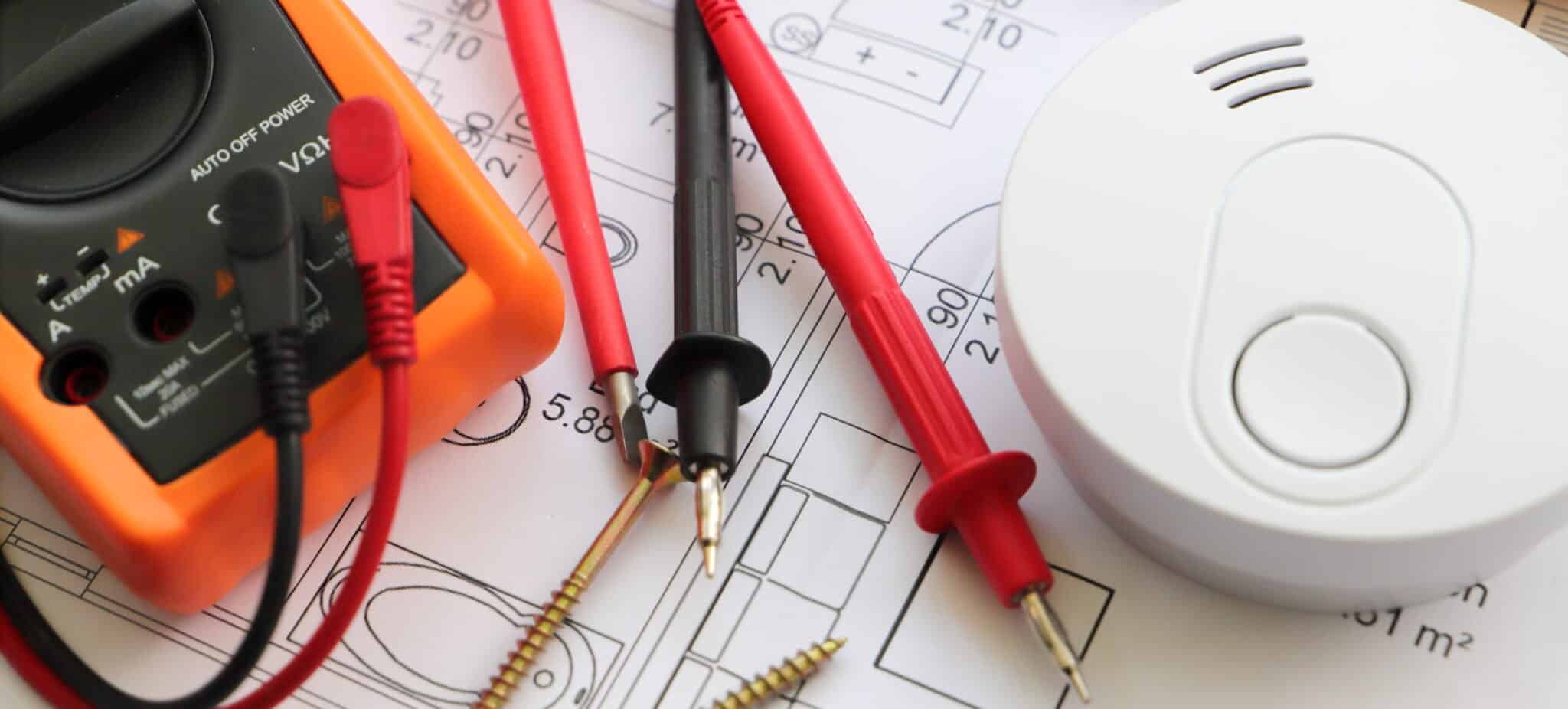
Installation Process for Smoke Detector Installation
Properly installing a smoke detector is crucial for ensuring its effectiveness in detecting smoke and alerting you in case of a fire.
Here’s a detailed guide on the installation process, ensuring you can confidently secure your home against fire hazards.
Preparing for Installation
Before starting the installation, choose the right type of smoke detector for your needs, considering the differences between ionization, photoelectric, and dual-sensor models.
Gather all necessary tools, typically including a drill, screwdriver, and possibly a hammer, along with any hardware provided with the detector.
Mounting the Base Plate
The first step in the installation process is to mount the base plate to your chosen location on the ceiling or wall.
If you’re mounting the detector on the ceiling, ensure it’s at least 4 inches away from the wall to avoid dead air spaces where smoke might not reach the detector efficiently.
For wall-mounted detectors, place them 4 to 12 inches below the ceiling.
- Mark the screw holes using the base plate as a template.
- Drill the holes and insert any necessary wall anchors.
- Secure the base plate with screws, ensuring it’s firmly attached.
Inserting the Battery
Before attaching the smoke detector to the base plate, insert the battery. This step is crucial for battery-operated or backup batteries in hardwired models.
Ensure the battery is inserted correctly, following the polarity instructions. For smoke detectors with a sealing feature, ensure the battery compartment is sealed properly to prevent tampering.
Attaching the Detector
Once the base plate is secured and the battery is in place, attach the smoke detector to the base plate. This usually involves aligning the detector with the base plate and twisting it to lock it in place.
Ensure the detector is securely attached and cannot be easily dislodged.
Testing the Smoke Detector
After installation, it’s essential to test the smoke detector to ensure it’s working correctly.
Press the test button on the detector; it should emit a loud, piercing sound. This indicates that the smoke detector is operational and ready to alert you in case of smoke detection.
Following Manufacturer’s Instructions
Always refer to the manufacturer’s instructions for specific installation steps, as there may be model-specific requirements or recommendations to ensure optimal performance.
Adhering to these guidelines can help maximize the effectiveness of your smoke detector and ensure your home’s safety.
The installation process for a smoke detector is a straightforward but vital task in ensuring your home’s safety.
By carefully mounting the base plate, inserting the battery, attaching the detector, and testing its functionality, you can enhance your home’s fire preparedness and provide peace of mind for yourself and your loved ones.
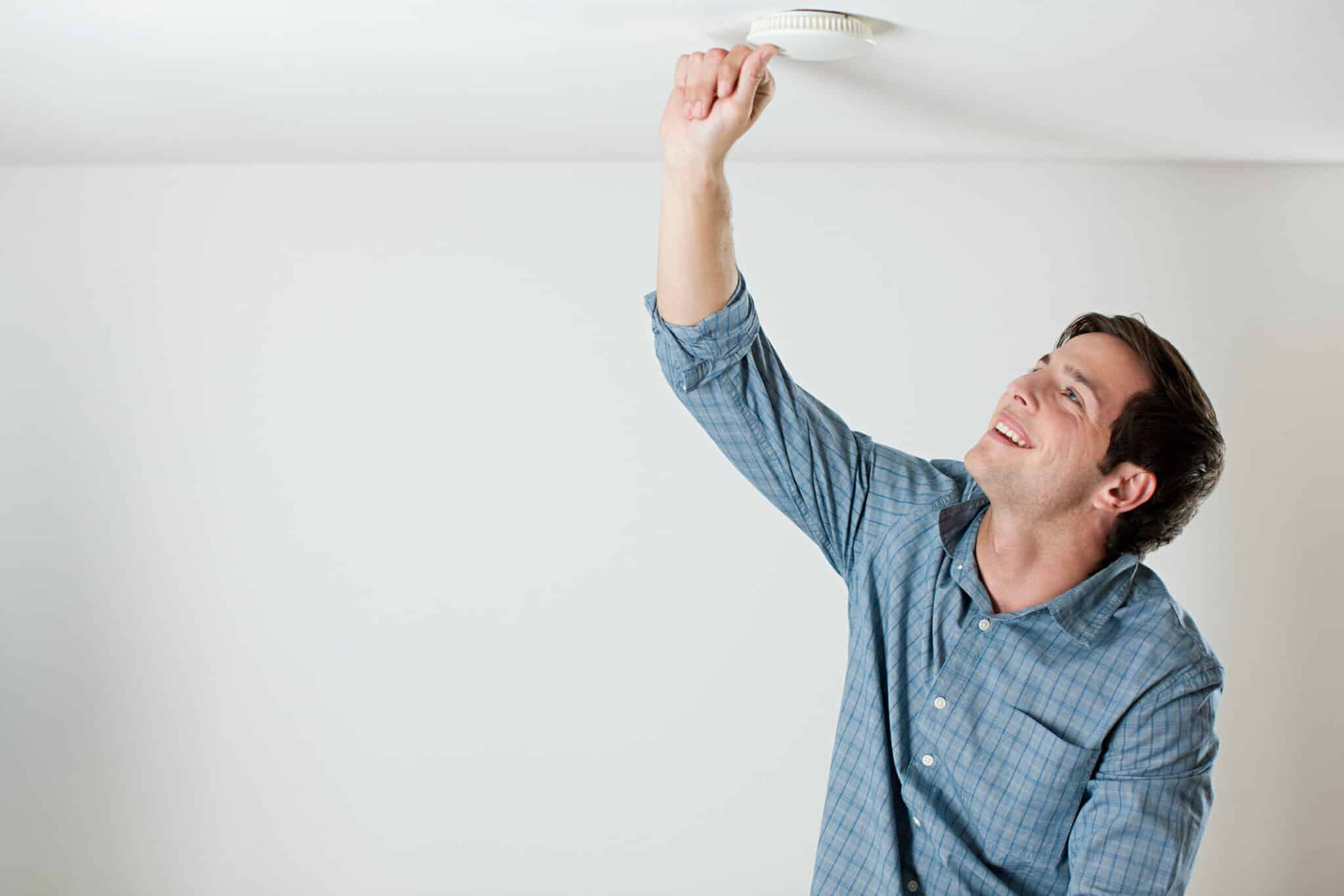
Maintenance and Testing for Effective Smoke Detector Installation
Ensuring the continuous functionality of your smoke detectors through regular maintenance and testing is vital for your home’s safety.
Here’s a comprehensive guide to help you keep your smoke detectors in optimal working condition.
Monthly Testing
Testing your smoke detectors monthly is a crucial practice to ensure they are operational when you need them most.
To test a detector, press the test button located on the device. The alarm should sound loudly if the detector is working correctly. If there’s no sound or the sound is weak, replace the batteries immediately and test again.
If the detector still doesn’t function properly after battery replacement, it may need to be replaced.
Annual Battery Replacement
Even if your smoke detectors are hardwired, they likely have backup batteries to ensure they continue to function during a power outage.
Replace these batteries at least once a year, or as soon as you hear the low-battery warning, which is usually a chirping sound.
When replacing batteries, it’s also a good opportunity to clean the detector by gently vacuuming the exterior to remove dust and cobwebs, which can affect sensitivity.
Cleaning and Maintenance
Dust, debris, and insects can interfere with a smoke detector’s ability to function correctly.
Use a vacuum cleaner with a brush attachment to gently clean the outside of the detector every six months. Avoid using cleaning agents or solvents, which can damage the sensor. For detectors with removable covers, open the cover and carefully vacuum inside the chamber.
However, be sure to refer to the manufacturer’s instructions to avoid inadvertently damaging the device.
Replacing Smoke Detectors
Smoke detectors have a limited lifespan, typically 10 years, after which their sensors can degrade, and their reliability can diminish.
Replace your smoke detectors every 10 years or sooner if they fail to respond to routine testing.
When replacing a smoke detector, consider upgrading to a model with enhanced features, such as interconnected alarms or smart technology, for improved safety.
Record Keeping
Keep a maintenance log for your smoke detectors, noting each time you test, clean, replace batteries, or replace the unit.
This record can help you maintain a regular schedule and ensure that no device goes unchecked or unmaintained.
Professional Inspection
Consider having a professional inspect your smoke detectors, especially if you have a comprehensive interconnected system or integrated home security system.
A Smoke Detector Installation professional can ensure all components are functioning correctly and provide advice on any needed upgrades or replacements.
Regular maintenance and testing are key components of responsible Smoke Detector Installation.
By adhering to a consistent schedule of testing, cleaning, battery replacement, and timely unit replacement, you can ensure your smoke detectors remain reliable, providing crucial protection for your home and loved ones.
Advanced Tips and Considerations for Smoke Detector Installation
To enhance the effectiveness of your Smoke Detector Installation, consider integrating advanced features and technologies.
These additional steps can provide greater coverage, convenience, and peace of mind.
Interconnected Smoke Detectors
For larger homes or multi-story buildings, interconnected smoke detectors offer an added layer of safety.
When one detector senses smoke and triggers an alarm, all interconnected units throughout the home will also sound an alarm. This system ensures that regardless of where you are in your home, you’ll be alerted to potential danger immediately.
Wired vs. Wireless
Interconnected smoke detectors can be either hardwired or wireless.
Hardwired systems are typically installed during construction or major renovations, while wireless systems can be a more feasible option for existing homes as they require less invasive installation.
Compatibility
Ensure that all interconnected smoke detectors are compatible with each other. Using the same brand and model can often simplify installation and ensure consistent performance.
Smart Smoke Detectors
Smart smoke detectors incorporate advanced technologies to provide enhanced features beyond traditional smoke detection.
Remote Alerts
These devices can send alerts to your smartphone or tablet when smoke is detected, allowing you to be aware of potential issues whether you’re at home or away.
Integration with Home Automation
Many smart smoke detectors can be integrated with home automation systems, enabling you to receive alerts through various devices and even automate responses, such as turning on lights or unlocking doors in the event of an alarm.
Self-Testing and Battery Monitoring
Some smart detectors perform automatic self-tests and monitor their battery levels, notifying you through an app if there’s an issue, which can simplify maintenance.
Location-Specific Considerations
Kitchens
Use photoelectric detectors or combination units with a smoke and carbon monoxide detector near kitchens to reduce false alarms caused by cooking smoke.
Bedrooms
Ensure that each bedroom has a smoke detector, particularly if doors are closed at night, to provide early warning to occupants.
Legal Compliance and Best Practices
Follow Local Codes
Ensure that your Smoke Detector Installation complies with local building codes and regulations, which may specify the type, placement, and number of detectors.
Regular Updates
Stay informed about new smoke detection technologies and best practices to keep your system up-to-date and as effective as possible.
By incorporating these advanced tips and considerations into your Smoke Detector Installation, you can significantly enhance the safety and security of your home.
Interconnected and smart smoke detectors offer additional layers of protection and convenience, ensuring that you and your loved ones are promptly alerted to potential fire hazards.
Replacement and Upgrades for Smoke Detector Installation
Ensuring the effectiveness of your smoke detectors over time requires regular replacement and consideration of technological upgrades.
Here’s a detailed guide on when and how to replace and upgrade your smoke detectors to maintain optimal safety in your home.
Timely Replacement of Smoke Detectors
10-Year Rule
Most smoke detectors have a lifespan of about 10 years. After this period, the sensors can degrade, and the unit’s reliability diminishes, even if it appears to be in working order.
Manufacturer’s Recommendations
Always adhere to the manufacturer’s guidelines regarding the lifespan and replacement of your smoke detector. Different models may have specific recommendations.
End-of-Life Signal
Modern smoke detectors are equipped with an end-of-life signal, which is usually a chirping sound distinct from the low-battery warning, indicating it’s time for a replacement.
Upgrading Your Smoke Detectors
Technological Advancements
The smoke detector market is continually evolving, with new advancements offering enhanced safety features. Stay informed about the latest technologies and consider these when it’s time to replace your units.
Smart Smoke Detectors
Consider upgrading to smart smoke detectors, which can provide real-time alerts to your smartphone, integrate with home automation systems, and even offer remote testing and battery monitoring capabilities.
Interconnected Systems
Upgrading to interconnected smoke detectors can significantly enhance safety, especially in larger homes, by ensuring that when one detector is triggered, all alarms sound throughout the house.
Installation of New Detectors
Professional Installation
When upgrading or replacing your smoke detectors, consider professional Smoke Detector Installation, especially for hardwired or interconnected systems, to ensure they are installed correctly and functioning as intended.
Testing New Detectors
After installing new smoke detectors, test them thoroughly to confirm they are operational. Regular testing should continue monthly to maintain safety.
Staying Informed
Educate Yourself
Keep abreast of the latest in fire safety technology and smoke detector advancements by following relevant publications, websites, and consumer reports.
Consult Professionals
If unsure about the best options for your home, consult with fire safety professionals or local fire departments. They can offer valuable insights into the most effective smoke detectors and installation practices for your specific needs.
By regularly replacing and considering upgrades for your smoke detectors, you can ensure that your home remains a safe environment.
Advanced features and new technologies can provide enhanced protection, peace of mind, and convenience, making it a worthwhile investment in your family’s safety.
Installation Best Practices for Smoke Detector Installation
Proper installation is crucial for the effectiveness of smoke detectors in providing early warnings during a fire.
Adhering to best practices ensures that your smoke detectors are installed correctly and function as intended.
Following Manufacturer’s Instructions
Detailed Guidelines
Each smoke detector comes with a set of instructions from the manufacturer. These guidelines provide specific details on how to install the device correctly, considering its unique features and requirements.
Warranty Compliance
Following the manufacturer’s instructions is also essential to ensure that the warranty remains valid. Improper installation can void the warranty, leaving you without support if the device malfunctions.
Optimal Placement on Ceilings and Walls
Ceiling Installation
Since smoke rises, the ideal placement for smoke detectors is on the ceiling. This position maximizes the detector’s ability to sense smoke as it accumulates during a fire.
Wall Installation
If ceiling installation is not possible, the next best option is high on a wall.
Detectors should be installed at least 4 inches and no more than 12 inches away from where the wall meets the ceiling to avoid dead air spaces where smoke might not reach the sensor.
Avoiding Corners
Corners, where walls and ceilings meet, should be avoided as they can create dead air spaces where smoke may not effectively reach the detector.
Avoiding Interference and False Alarms
Distance from Windows, Doors, and Ducts
To prevent drafts from affecting the operation of smoke detectors, they should be installed away from windows, doors, and HVAC ducts.
Drafts can either push smoke away from the detector or cause false alarms by introducing dust or other particles.
Kitchen Considerations
Avoid placing smoke detectors too close to the kitchen to reduce false alarms caused by cooking smoke or steam. A photoelectric detector or a heat alarm can be a better choice near kitchens to minimize nuisance alarms.
Additional Tips
Interconnected Systems
If you are installing multiple smoke detectors, consider using interconnected units. This setup ensures that when one detector is triggered, all alarms sound, providing a more effective warning system throughout the home.
Accessibility for Maintenance
Install smoke detectors in locations where they can be easily accessed for testing, battery replacement, and cleaning.
Ensuring easy access encourages regular maintenance, which is vital for the detector’s reliability.
By following these installation best practices, you can enhance the effectiveness of your smoke detectors, ensuring they provide the necessary protection and early warning in the event of a fire.
Proper installation is a critical step in leveraging the full potential of smoke detectors to safeguard your home and family.
The Role of Smoke Detectors in Home Safety
Smoke detectors play a pivotal role in ensuring the safety and security of your home. They are the first line of defense against the dangers of fire, providing an early warning that can save lives and prevent property damage.
Understanding the broader context of smoke detector installation can help you appreciate its importance and encourage proactive measures in fire safety.
Enhancing Fire Safety Awareness
Community Engagement
Engaging with your local community about the importance of smoke detector installation can amplify the message of fire safety.
Community programs or workshops can educate residents about the correct installation practices, maintenance, and the latest technologies in smoke detection.
Fire Safety Education:
Incorporating fire safety education into school curriculums and community programs can instill the importance of smoke detectors from an early age.
Educating children and adults alike on how to respond when a smoke detector goes off can significantly improve the outcomes in the event of a fire.
Also read: Safeguard Your Home: Mastering Whole House Surge Protector Installation
Technological Advancements in Smoke Detection
Innovative Smoke Detection Solutions
The field of smoke detection is continuously evolving, with new technologies enhancing the reliability and functionality of smoke detectors.
Smart smoke detectors, which can send alerts to your phone and integrate with home automation systems, represent a significant advancement in the realm of fire safety.
Integration with Home Security Systems
Modern smoke detectors can be integrated with comprehensive home security systems, providing a holistic approach to home safety.
This integration allows for a coordinated response to fire incidents, including automatic notification of emergency services and activation of fire suppression systems.
The Importance of a Comprehensive Fire Safety Plan
Beyond Installation
While smoke detector installation is crucial, it’s equally important to have a comprehensive fire safety plan in place. This plan should include regular fire drills, a clear understanding of escape routes, and a designated meeting point outside the home.
Collaboration with Fire Departments
Collaborating with local fire departments can provide valuable insights into fire safety. Many fire departments offer home inspection services and can provide recommendations on smoke detector placement and fire safety strategies tailored to your home’s specific layout and needs.
Smoke detector installation is a critical component of home safety, but it’s just one part of a broader fire safety strategy.
By staying informed about the latest advancements in smoke detection technology, engaging with your community on fire safety, and developing a comprehensive fire safety plan, you can significantly enhance the protection offered by smoke detectors.
Remember, the goal is not just to install smoke detectors but to create an environment where the risk of fire is minimized, and the safety of all occupants is prioritized.
Top 5 Best Practices for Effective Smoke Detector Installation
Ensuring the safety and well-being of your home and family involves more than just installing smoke detectors; it requires strategic planning and understanding of the best practices in smoke detector installation.
1. Comprehensive Research and Selection
Informed Choices
Dive deep into the types of smoke detectors available, understanding the nuances between ionization, photoelectric, and dual-sensor models.
Your choice should align with your home’s specific needs, considering factors like the presence of large particles (common in flaming fires) or smaller particles (more typical in smoldering fires).
Budget and Quality
Balance your budget with the need for quality and reliability. While cost is a factor, the primary focus should be on the detector’s effectiveness and longevity. Remember, investing in a slightly more expensive model could offer better protection and features.
2. Strategic Detector Placement
Whole-Home Coverage
Install smoke detectors on every level of your home, including the basement and attic, to ensure no area is left unprotected.
Each bedroom and common area should have a detector to maximize the chances of early detection, regardless of where a fire starts.
Location Specifics
Understand the layout of your home to determine the optimal number of detectors needed. This ensures comprehensive coverage without leaving any vulnerable spots in your home’s fire detection network.
3. Installation Precision
Central Location Installation
Place detectors in central locations on ceilings or high on walls to capture rising smoke effectively. Avoid corners and edges where dead air spaces could hinder smoke detection.
Professional Assistance
For hardwired models or complex setups, consider hiring a Smoke Detector Installation professional to ensure the installation is done correctly. This can provide peace of mind that your smoke detectors are installed according to safety standards.
4. Immediate and Inclusive Testing
Engage Household Members
When testing alarms post-installation, involve all household members. This ensures everyone is familiar with the alarm sound and understands the urgency when it sounds.
Evacuation Plan Integration
Use the testing opportunity to reinforce your home’s fire evacuation plan, ensuring everyone knows the quickest and safest way out of the house from different locations.
5. Regular Maintenance and Testing
Monthly Checks
Conduct manual tests monthly, even for smart detectors that feature self-testing. This routine ensures that each detector is operational and loud enough to wake or alert occupants.
Safe Testing Practices
Use appropriate tools like a sturdy stepladder to reach detectors safely. Never test alone; always have someone nearby to assist in case of an accident.
By adopting these five key strategies for smoke detector installation, you not only enhance the effectiveness of your smoke alarms but also reinforce the overall safety culture in your home, ensuring that every family member is prepared and protected in the event of a fire.
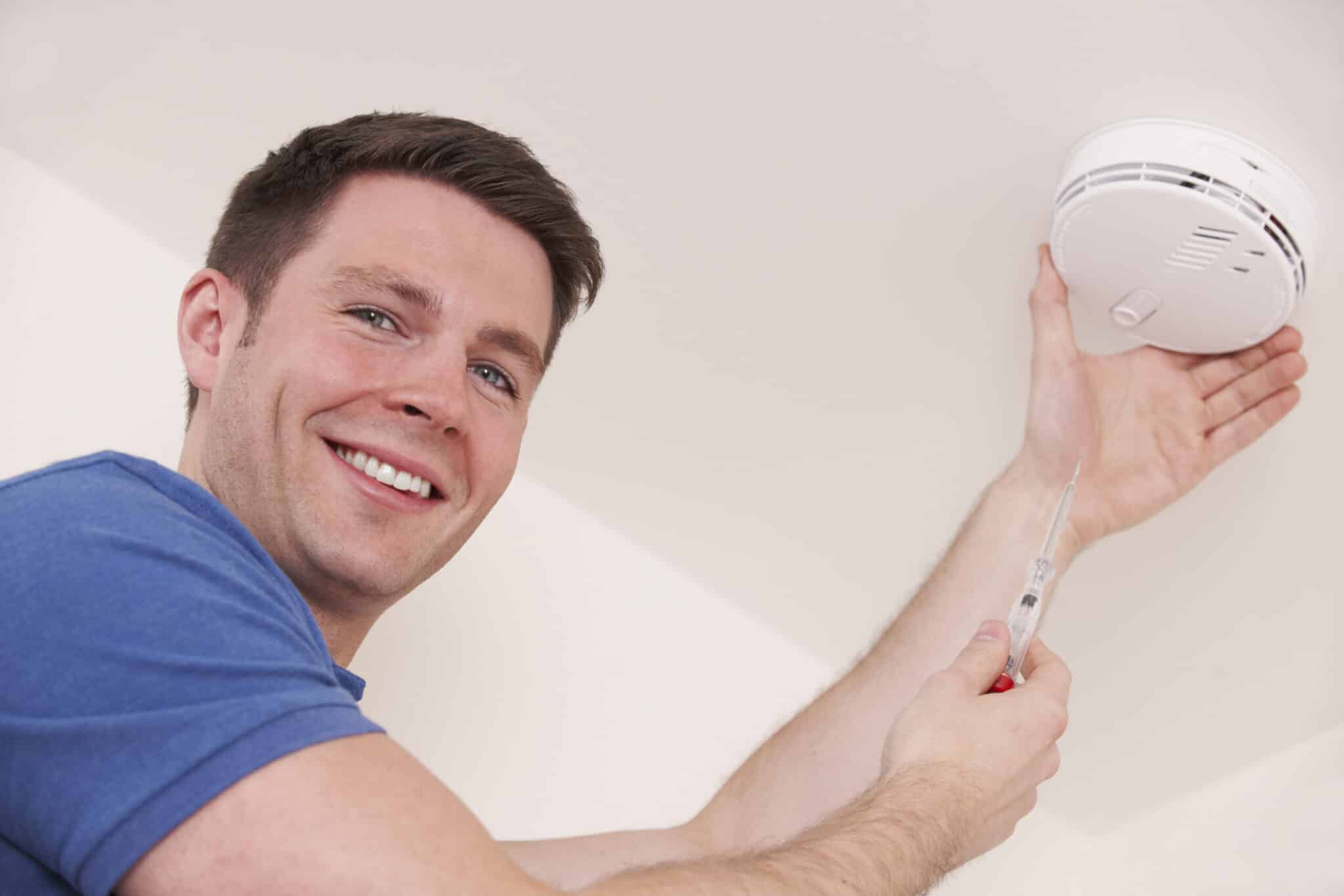
The Local Electrician TX: Your Go-to Smoke Detector Installation Expert
When it comes to ensuring the safety of your home through professional smoke detector installation, The Local Electrician TX stands out as a reliable partner. Their expertise in smoke detector installation and maintenance can provide you with peace of mind, knowing that your home’s fire detection system is in expert hands.
Expert Installation Services
Certified Professionals
The Local Electrician TX employs certified electricians who specialize in smoke detector installation. Their team is trained to handle various types of smoke detectors, ensuring that your devices are installed correctly and comply with local safety regulations.
Customized Solutions
Understanding that every home is unique, The Local Electrician TX offers personalized consultation to determine the best smoke detector solutions for your specific needs.
They consider your home’s layout, your family’s lifestyle, and local code requirements to recommend the most effective smoke detector placement and products.
Comprehensive Coverage Across Locations
Wide Service Area
The Local Electrician TX provides smoke detector installation services across multiple locations, ensuring that a broad range of homeowners can access their expertise.
Whether you’re in Pecan Grove, Sugarland, Katy, or any of the other areas they serve, you can rely on their prompt and professional Smoke Detector Installation service.
Local Knowledge
Being familiar with the specific requirements and challenges of each location, The Local Electrician TX can offer advice and solutions that are tailored to the regional characteristics of your area, enhancing the effectiveness of your smoke detector installation.
Ongoing Support and Maintenance
Maintenance Services
Beyond installation, The Local Electrician TX offers regular maintenance services to ensure your smoke detectors remain in optimal working condition. This includes testing, battery replacement, and cleaning, as well as troubleshooting any issues that may arise.
Educational Resources:
The Local Electrician TX believes in empowering homeowners with knowledge. They provide valuable information on smoke detector maintenance, safety tips, and the latest advancements in smoke detection technology, helping you stay informed and safe.
Connect with The Local Electrician in TX
To learn more about their services or to schedule an appointment, visit The Local Electrician TX’s Google My Business page.
Explore their range of services, read customer reviews, and view their service areas, including Pecan Grove, Meadows Place, Stafford, Sugarland, Richmond, Rosenberg, Fulshear, Jersey Village, Heights, Memorial, Energy Corridor, Missouri City, Bellaire, West University, Spring Valley Village, Houston, and Katy.
By choosing The Local Electrician TX for your smoke detector installation, you’re not just ensuring that your home is equipped with reliable fire detection equipment; you’re also gaining a partner dedicated to your safety and well-being.
Conclusion
Understanding the critical importance of smoke detector installation is paramount for ensuring the safety and well-being of your home and family.
From selecting the right type of smoke detector to understanding the best practices for installation and maintenance, every step is crucial in building a reliable fire detection system.
Regular testing, proper placement, and staying informed about the latest in smoke detection technology can significantly enhance your home’s safety.
The Local Electrician TX stands as a trusted partner in this essential safety endeavor, offering expert smoke detector installation services across various locations.
Their professional approach, combined with a deep understanding of local requirements and the latest safety standards, ensures that your smoke detector system is installed and maintained to the highest standards.
Remember, a well-installed and maintained smoke detector is more than just a device; it’s a lifeline that can save lives by providing an early warning in the event of a fire. By investing in quality smoke detector installation and maintenance services, like those offered by The Local Electrician TX, you’re investing in the safety and peace of mind for you and your loved ones.

FAQS
-
How often should I test my smoke detector?
Testing your smoke detector monthly is recommended to ensure it’s working correctly. Press the test button to emit a loud alarm, indicating it’s functioning properly.
-
How often should I replace my smoke detector?
Smoke detectors should be replaced every 10 years, even if they appear to be in working order. Over time, the sensors in smoke detectors can degrade, reducing their effectiveness. -
Can I install a smoke detector myself, or should I hire a professional?
While many homeowners can install battery-operated smoke detectors themselves by following the manufacturer’s instructions, hiring a Smoke Detector Installation professional can be beneficial, especially for hardwired systems. -
Are there different types of smoke detectors for different areas of the home?
Yes, different types of smoke detectors are better suited for specific areas of the home. -
How do I know if my smoke detector is working properly?
To ensure your smoke detector is working properly, test it monthly by pressing the test button and waiting for the alarm to sound.
What are your experiences with smoke detector installation in your home?
Have you encountered any challenges, or do you have any tips to share on ensuring the effectiveness of your smoke detectors?

























